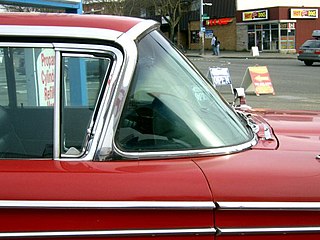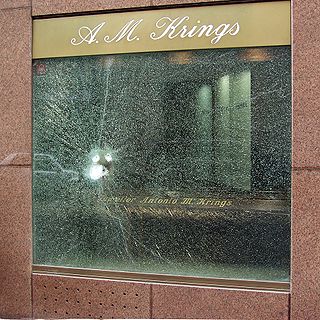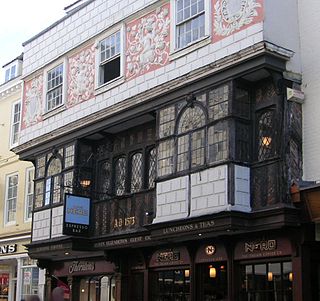Examples
The so-called "pummel test" inter alia is used to control the quality of composite glass.
Composite glass is the collective term for a laminate having at least two glass panes which are in each case connected by means of an adhesive intermediate layer composed of plastic, e.g. by means of a casting resin or a thermoplastic composite film, which is highly tear-resistant and is viscoelastic. Composite glass should not be confused with composite windows.
Windscreens of all kinds of vehicles as well as crash-proof glazing or pavement light used in the construction sector are part of the main fields of application. The composite film used mostly in the construction and automotive sectors is composed of polyvinyl butyral (PVB). Other customary intermediate layer materials include ethylene-vinyl acetate (EVA), polyacrylate (PA), poly(methyl methacrylate) (PMMA), polyurethane (PUR), etc.
Depending on the number, type and thickness of the glass panes used and intermediate layers, composite glasses are used as safety glass, sound-proof glass, fireproof glass, as well as throw-through-resistant, breakthrough-resistant or ballistic-resistant glass etc. Glazing which is particularly resistant is produced by means of a combination of glass panes having one or a plurality of panes made from polycarbonate. Smart glasses are also often manufactured as composite glass.
Since 2006, in accordance with the latest results coming from research, films between glass, [1] which are provided by means of PVB, EVA or TPU as well as LED and SMD electronics mentioned above, are laminated whereby even products such as luminous glass stairways and tables as well as other composite safety glass systems are made possible.
Recently, scientists in Queensland, Australia have developed composite glass that gives phones an 'unbreakable' screen. [2] This breakthrough could enhance the knowledge of composite glass as we know it.
The so-called "pummel test" inter alia is used to control the quality of composite glass.
2. Australian Broadcasting Company (ABC) News "Composite glass breakthrough by Queensland researchers could help make phone screens 'unbreakable'"

A window is an opening in a wall, door, roof, or vehicle that allows the exchange of light and may also allow the passage of sound and sometimes air. Modern windows are usually glazed or covered in some other transparent or translucent material, a sash set in a frame in the opening; the sash and frame are also referred to as a window. Many glazed windows may be opened, to allow ventilation, or closed, to exclude inclement weather. Windows may have a latch or similar mechanism to lock the window shut or to hold it open by various amounts.

A printed circuit board is a medium used to connect electronic components to one another in a controlled manner. It takes the form of a laminated sandwich structure of conductive and insulating layers: each of the conductive layers is designed with an artwork pattern of traces, planes and other features etched from one or more sheet layers of copper laminated onto and/or between sheet layers of a non-conductive substrate. Electrical components may be fixed to conductive pads on the outer layers in the shape designed to accept the component's terminals, generally by means of soldering, to both electrically connect and mechanically fasten them to it. Another manufacturing process adds vias: plated-through holes that allow interconnections between layers.

The windshield or windscreen of an aircraft, car, bus, motorbike, truck, train, boat or streetcar is the front window, which provides visibility while protecting occupants from the elements. Modern windshields are generally made of laminated safety glass, a type of treated glass, which consists of, typically, two curved sheets of glass with a plastic layer laminated between them for safety, and bonded into the window frame.

Bulletproof glass, ballistic glass, transparent armor, or bullet-resistant glass is a strong and optically transparent material that is particularly resistant to penetration by projectiles. Like any other material, it is not completely impenetrable. It is usually made from a combination of two or more types of glass, one hard and one soft. The softer layer makes the glass more elastic, so that it can flex instead of shatter. The index of refraction for all of the glasses used in the bulletproof layers must be almost the same to keep the glass transparent and allow a clear, undistorted view through the glass. Bulletproof glass varies in thickness from 3⁄4 to 3+1⁄2 inches.

Polyvinyl butyral is a resin mostly used for applications that require strong binding, optical clarity, adhesion to many surfaces, toughness and flexibility. It is prepared from polyvinyl alcohol by reaction with butyraldehyde. The major application is laminated safety glass for automobile windshields. Trade names for PVB-films include KB PVB, Saflex, GlasNovations, Butacite, WINLITE, S-Lec, Trosifol and EVERLAM. PVB is also available as 3D printer filament that is stronger and more heat resistant than polylactic acid (PLA).

Smart glass, also known as switchable glass, dynamic glass, and smart-tinting glass, is a type of glass that can change its reflective properties to prevent sunlight and heat from entering a building and to also provide privacy. Smart glass for building aims to provide more energy-efficient buildings by reducing the amount of solar heat that passes through glass windows.

Borosilicate glass is a type of glass with silica and boron trioxide as the main glass-forming constituents. Borosilicate glasses are known for having very low coefficients of thermal expansion, making them more resistant to thermal shock than any other common glass. Such glass is subjected to less thermal stress and can withstand temperature differentials without fracturing of about 165 °C (300 °F). It is commonly used for the construction of reagent bottles and flasks as well as lighting, electronics, and cookware.
Storm windows are windows that are mounted outside or inside of the main glass windows of a house. Storm windows exist in North America, but are uncommon in continental Europe, where double, triple or quadruple glazing is prevalent. Storm windows can be made of glass, rigid plastic panels, or flexible plastic sheets; and may be permanently or temporarily mounted. They function similarly to insulated glazing. The term may also refer to a small openable flap found in the side window on light aircraft.

Safety glass is glass with additional safety features that make it less likely to break, or less likely to pose a threat when broken. Common designs include toughened glass, laminated glass, and wire mesh glass. Toughened glass was invented in 1874 by Francois Barthelemy Alfred Royer de la Bastie. Wire mesh glass was invented in 1892 by Frank Shuman. Laminated glass was invented in 1903 by the French chemist Édouard Bénédictus (1878–1930).

Architectural glass is glass that is used as a building material. It is most typically used as transparent glazing material in the building envelope, including windows in the external walls. Glass is also used for internal partitions and as an architectural feature. When used in buildings, glass is often of a safety type, which include reinforced, toughened and laminated glasses.

Tempered or toughened glass is a type of safety glass processed by controlled thermal or chemical treatments to increase its strength compared with normal glass. Tempering puts the outer surfaces into compression and the interior into tension. Such stresses cause the glass, when broken, to shatter into small granular chunks instead of splintering into jagged shards as ordinary annealed glass does. The granular chunks are less likely to cause injury.

Laminated glass is a type of safety glass consisting of two or more layers of glass with one or more thin polymer interlayers between them which prevent the glass from breaking into large sharp pieces. Breaking produces a characteristic "spider web" cracking pattern when the impact is not enough to completely pierce the glass.
An electrochromic device (ECD) controls optical properties such as optical transmission, absorption, reflectance and/or emittance in a continual but reversible manner on application of voltage (electrochromism). This property enables an ECD to be used for applications like smart glass, electrochromic mirrors, and electrochromic display devices.
Picture framing glass usually refers to flat glass or acrylic ("plexi") used for framing artwork and for presenting art objects in a display box.
Triplex Safety Glass was a British brand of toughened glass and laminated glass. The marque is often seen on vehicle and aircraft windscreens.

Glazing, which derives from the Middle English for 'glass', is a part of a wall or window, made of glass. Glazing also describes the work done by a professional "glazier". Glazing is also less commonly used to describe the insertion of ophthalmic lenses into an eyeglass frame.

Insulating glass (IG) consists of two or more glass window panes separated by a space to reduce heat transfer across a part of the building envelope. A window with insulating glass is commonly known as double glazing or a double-paned window, triple glazing or a triple-paned window, or quadruple glazing or a quadruple-paned window, depending upon how many panes of glass are used in its construction.
Glass frit bonding, also referred to as glass soldering or seal glass bonding, describes a wafer bonding technique with an intermediate glass layer. It is a widely used encapsulation technology for surface micro-machined structures, e.g., accelerometers or gyroscopes. This technique utilizes low melting-point glass and therefore provides various advantages including that viscosity of glass decreases with an increase of temperature. The viscous flow of glass has effects to compensate and planarize surface irregularities, convenient for bonding wafers with a high roughness due to plasma etching or deposition. A low viscosity promotes hermetically sealed encapsulation of structures based on a better adaption of the structured shapes. Further, the coefficient of thermal expansion (CTE) of the glass material is adapted to silicon. This results in low stress in the bonded wafer pair. The glass has to flow and wet the soldered surfaces well below the temperature where deformation or degradation of either of the joined materials or nearby structures occurs. The usual temperature of achieving flowing and wetting is between 450 and 550 °C.

Quadruple glazing is a type of insulated glazing comprising four glass panes, commonly equipped with low emissivity coating and insulating gases in the cavities between the glass panes. Quadruple glazing is a subset of multipane (multilayer) glazing systems. Multipane glazing with up to six panes is commercially available.

The Samsung Galaxy Z Fold 2 is an Android-based foldable smartphone developed by Samsung Electronics for its Samsung Galaxy Z series, succeeding the Samsung Galaxy Fold. It was announced on 5 August 2020 alongside the Samsung Galaxy Note 20, the Samsung Galaxy Tab S7, the Galaxy Buds Live, and the Galaxy Watch 3. Samsung later revealed pricing and availability details on 1 September.